When it comes to kitchen islands, there are two main designs: those with one level and those with two levels. Both have their own unique benefits and drawbacks, so it can be tricky to decide which is the best option for your home. In this article, we will take a look at both designs and help you decide which is the best choice for you.
Two-Level Kitchen
When it comes to kitchen islands, two-level islands offer a unique and functional way to maximize space in your kitchen. Two-level islands can provide more countertop space for meal preparation or even act as an additional dining area. But is a two-level island the best choice for you? Let’s explore some of the advantages and disadvantages of having a two-level island in your kitchen.
Pros and Cons
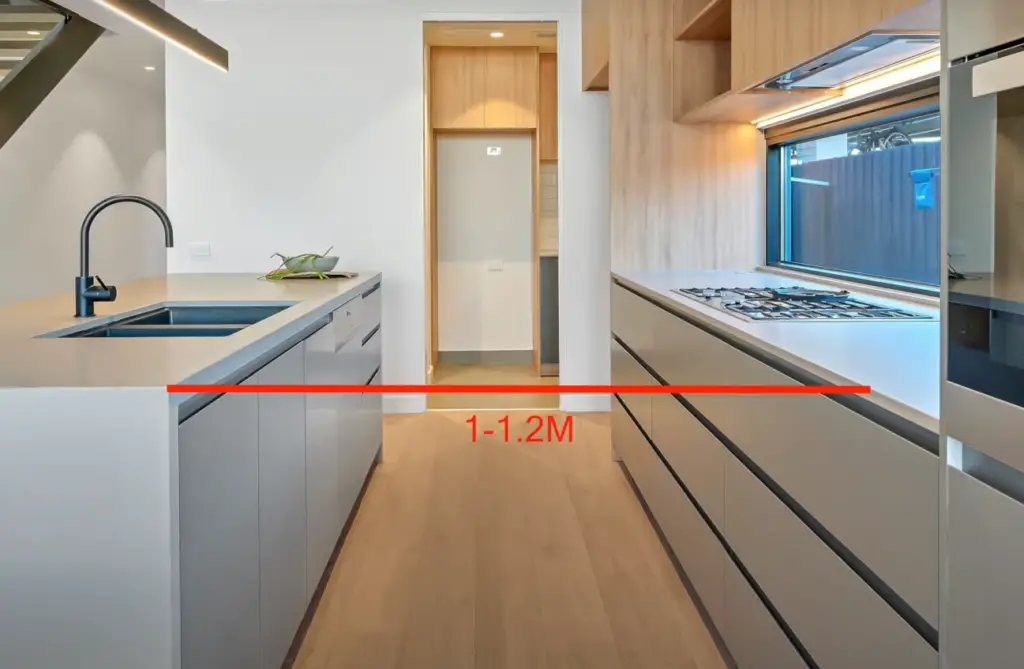
However, there are some drawbacks associated with having a two-level kitchen island. One drawback is that it takes up more floor space than a one-level island. This means that if you have a limited amount of space in your kitchen, then a two-level island may not be the best option for you. Another possible drawback is that two-level islands may be more expensive than one-level islands due to the extra complexity involved in their construction.
Pros:
- More room for guests to sit at;
- The perfect option for entertaining large groups;
- Offers more countertop space for meal prep;
- Increases the aesthetic appeal of your space;
Cons:
- More expensive than one-level kitchen islands;
- Requires extra construction and materials;
- Not ideal for smaller kitchens with limited space [1];
One-Level Kitchen
The traditional one-level kitchen island is a timeless choice for any modern kitchen. This type of island is typically the most affordable option and provides plenty of countertop space for meal prep, storage, and seating. One-level kitchen islands are great options if you’re looking to keep your kitchen layout looking neat and tidy, as they generally don’t take up a lot of space. They can also be used to create additional seating for guests, or as a breakfast bar.
When shopping for a one-level kitchen island, look for durable materials like laminate countertops and solid wood cabinetry that won’t wear down easily over time. Depending on your budget, you may be able to invest in high-end appliances, like a built-in sink or stovetop.
Pros and Cons
Pros:
- Affordable option;
- Space efficient;
- Great for meal prep, storage and seating;
- Can add additional appliances to the island, like a sink or stovetop;
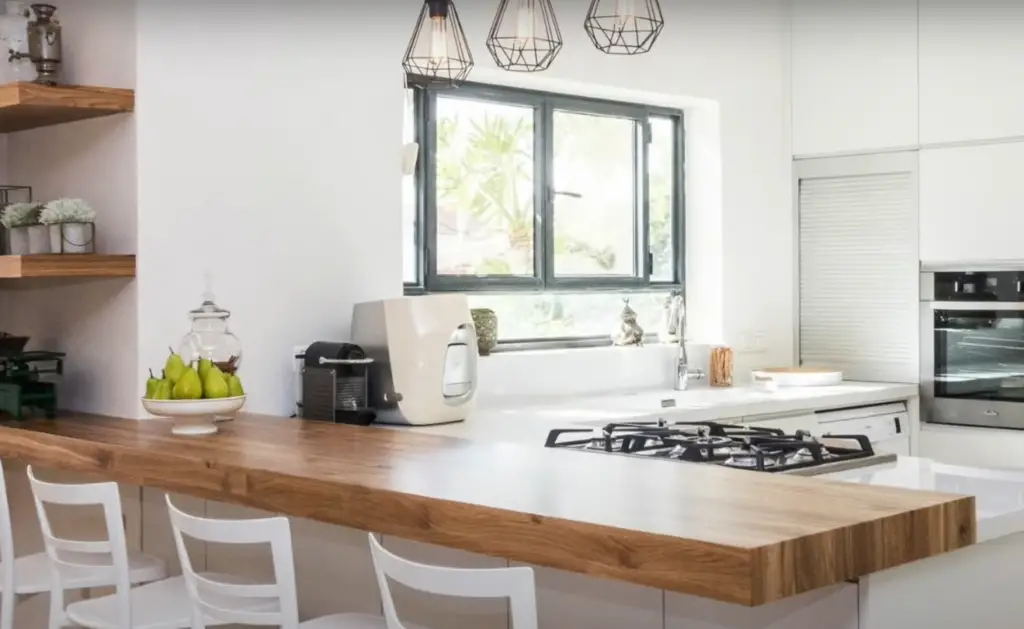
Cons:
- Limited design options;
- May not be as spacious as two-level kitchen islands;
- Not as ideal for entertaining larger groups of people [2];
Differences between Two Level Kitchen Island and One Level
When it comes to kitchen islands, there are two main types: two-level and one-level. Two-level kitchen islands have a higher countertop with a lower countertop underneath it. This gives the island more versatility because you can use the top and bottom counters for different purposes or activities. On the other hand, one-level kitchen islands have a single countertop, which is typically set at a standard height.
Two-level kitchen islands are often more expensive than one-level because they require more materials and labor to build. They also take up more space in the kitchen due to their two-level design. However, they offer much greater flexibility when it comes to the types of activities that can be done on the island. For example, you can use the lower countertop to prepare food while using the higher countertop for slicing, dicing, and other tasks.
One-level kitchen islands are more cost-effective than two-level models because they don’t require as much material or labor. They don’t take up as much space in the kitchen either, making them a great choice for smaller kitchens. However, one-level islands are generally less versatile than two-level models because they only offer a single countertop.
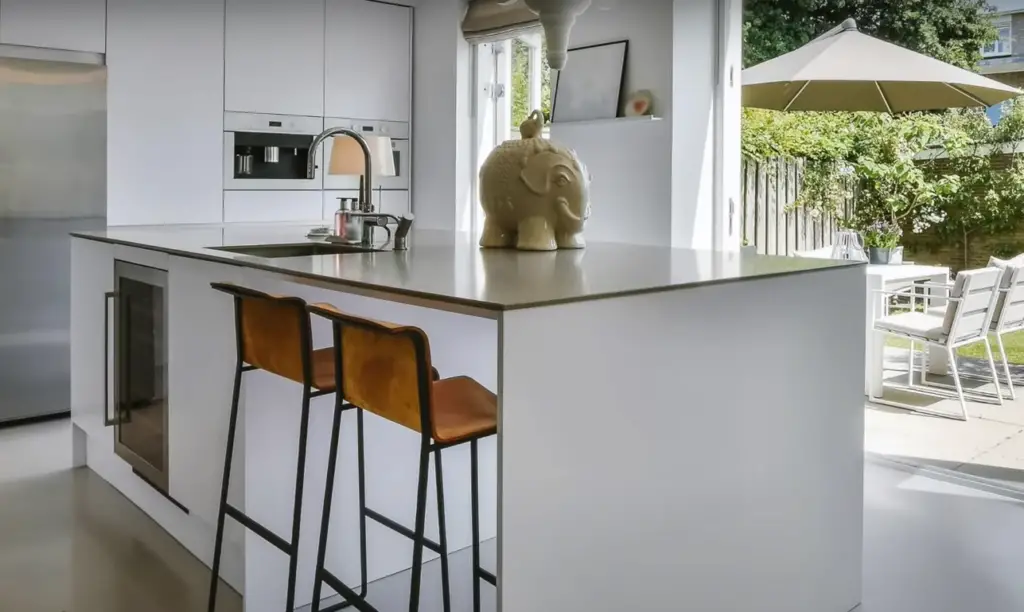
There are pros and cons to both types of kitchen islands, so it’s important to consider your lifestyle and needs when deciding which one is best for you. Ultimately, the decision of a two-level kitchen island vs. one-level will come down to personal preference. Both options have their advantages and disadvantages, so it’s important to weigh all the factors before making a final decision.
No matter which type of kitchen island you choose, both offer plenty of benefits that can help make food preparation easier and more enjoyable. With the right planning, either option can be integrated into any kitchen design, allowing for maximum use of space and creating an attractive focal point in the room. The key is choosing a model that fits your lifestyle and needs so you can get the most from your new kitchen island!
Design
If you’re looking to add a two-level kitchen island to your space, there are some design tips to keep in mind. First, consider the size of your kitchen and how much room you have for an island. If you have limited space, a two-level model may not be the best choice since it takes up more room than one-level models.
Next, think about how you plan to use the island. For example, if you’ll be using the top countertop mostly for food preparation while using the lower level as a dining area or workspace, then choose a model with ample space on each level. It’s also important to make sure the countertop heights are comfortable for you.
Finally, take into account the style of your kitchen. A two-level island can be an attractive feature in any space, but it’s important to make sure the design of your island complements the overall look and feel of your kitchen. Consider both form and function when selecting a model that will fit seamlessly in with your existing decor.
Versatility
No matter which type of kitchen island you choose, both offer plenty of benefits. Two-level models give you the flexibility to use the top and bottom countertops for different tasks, while one-level islands provide a more streamlined look. Ultimately, it comes down to personal preference and finding a model that fits your lifestyle and needs. [3]
Whether you opt for a two-level or one-level, kitchen islands are an excellent way to add extra counter space and storage to any kitchen. They can help make food preparation easier, create an attractive focal point in the room, and maximize the use of space in smaller kitchens. So take some time to consider what type of model is best suited for your lifestyle and design needs — then enjoy all the benefits that a kitchen island can bring!
Similarities between Two-Level and One-Level Kitchen Islands
No matter the style or size, the key similarities between two-level kitchen islands and one-level kitchen islands are that they both provide extra workspace and storage in your kitchen. You can use it either to prepare meals, clean up, store ingredients, cookware, or other items you may need while cooking.
Both types of islands also come with all sorts of customizable features such as bar seating, pull-out drawers for easy access to stored items and additional counter space for appliances like microwaves. Moreover, many islands feature open shelving which makes it easier to find what you need without rummaging through cabinets.
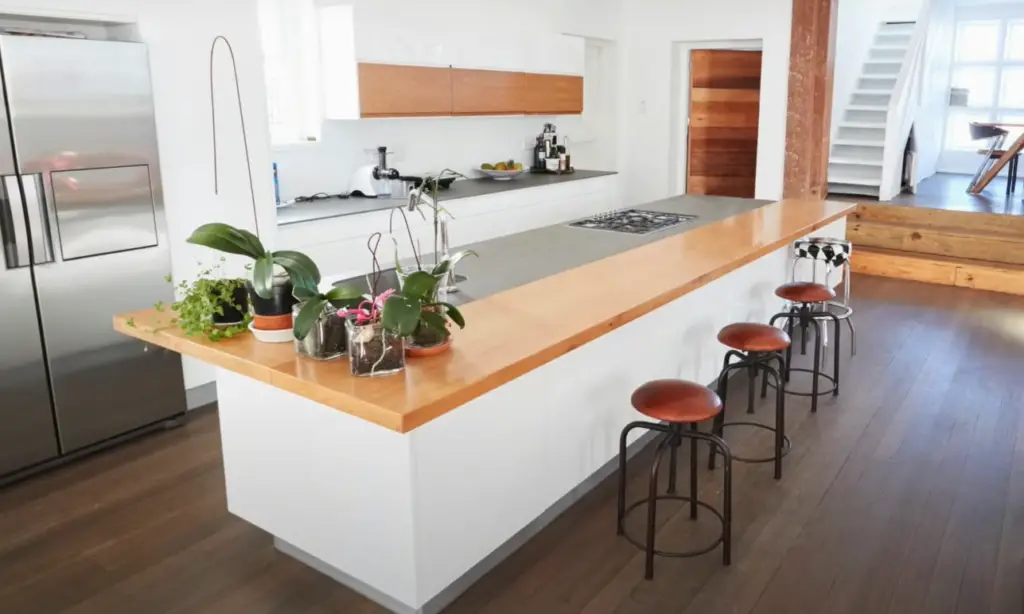
They Serve the Same Functions
In the end, two-level kitchen islands and one-level kitchen islands serve the same purpose – they give you extra workspace and storage in your kitchen. Whether it’s meal prep, storage for food items, or a spot to relax with friends, both types are great options.
What might make one style better than the other will depend on your needs and preferences? That’s why it might be helpful to consider some of the advantages each has over the other so you can decide what works best for you.
Things to Consider When Choosing a One or Two-Tiered Kitchen Island
When deciding between a one or two-tiered kitchen island, the most important thing to consider is the size of your kitchen. You want an island that fits comfortably into the space without making it feel cramped or overcrowded. If you have a small kitchen, then a single level might be best for you as it won’t take up too much room, but if you have more space, then you can think about adding in more levels to create more storage and a worktop area.
You also want to think about how much storage and counter space you need. Single-level islands are great for those who don’t need a lot of extra room, but if you have lots of kitchen utensils and appliances that need storing or multiple people who need workspace at the same time, then two tiers could be beneficial. It all depends on your needs – just make sure to consider these factors when deciding which type of island is best for you.
At the end of the day, it’s important to remember that there is no “one size fits all” solution when it comes to kitchen islands. Every home and family has different needs, so make sure to weigh your options carefully before making a decision. With the right planning, you can find the perfect island that works for your lifestyle and kitchen space.
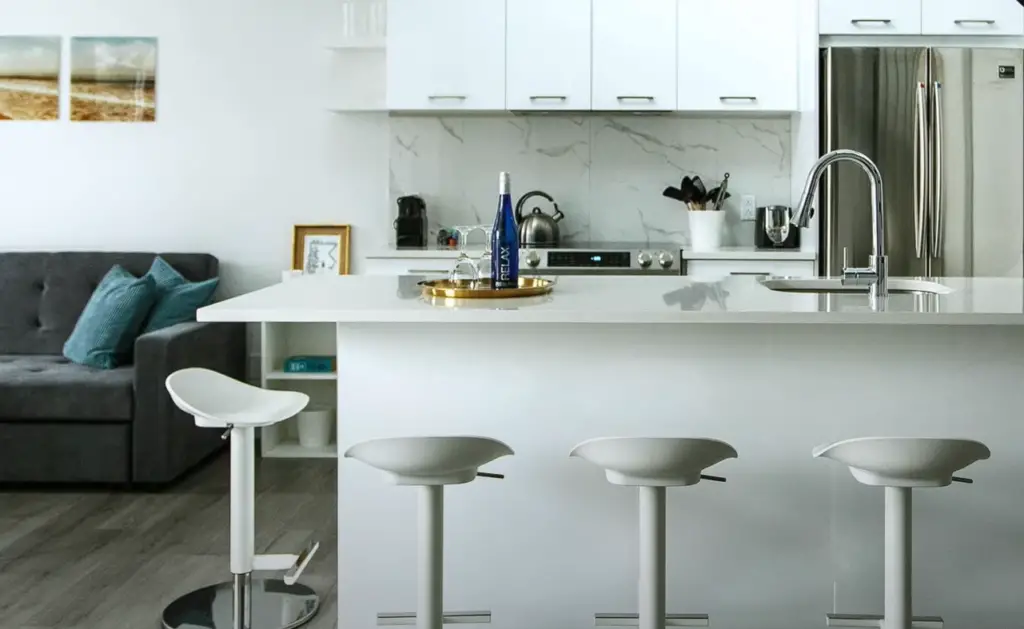
Space/Size of Island
If you have a small kitchen, then a single-level island might be best for you as it won’t take up too much room. However, if you have more space and need an extra countertop or storage area, then two tiers could be beneficial. You should also measure the size of your kitchen before buying an island to ensure that it will fit comfortably in the space without making it feel cramped or overcrowded.
How will it be used?
Think about how often people will be using the kitchen island and what they will be using it for. If you’re looking for additional counter space to prep food or store appliances, then a single-level island should do the trick. But if multiple people will be using the island at once, then a two-tier option could be more beneficial as it can provide extra workspace without crowding each other.
Aesthetics
The style and design of your kitchen island are important too. Single-level islands are great for those who want a simple and clean look, while two-tier options can create more visual interest in the space. Whether you’re going for a modern or traditional style, make sure to choose an island that will fit in with the overall aesthetic of your kitchen. [4]
Ultimately, when deciding between a one or two-tiered kitchen island, it’s important to consider all of these factors before making a decision. With the right planning, you can find the perfect island that works for both your lifestyle and kitchen space.
FAQ
Are two-level islands outdated?
No, two-level islands are definitely not out of style. In fact, they have been gaining popularity in recent years as versatile and stylish addition to many kitchens. They can be used for extra counter space, storage options, and even seating areas if designed properly. Many people prefer two-level islands because they can make the kitchen feel bigger while providing more functionality than a single-level island could. [5]
Are double kitchen islands a good idea?
If you decide to go with two-level kitchen islands, think about how much usage you’ll get out of each one before making a decision. If one island will be dedicated to meal prep and the other will be a casual dining area or used for entertaining, it might make sense to install two separate islands that are each customized to their respective functions. If you’ll primarily use both islands for meal prep, one large island may do the trick.
In most cases, double kitchen islands look great and can have practical benefits—but they may not be right for every kitchen. Take time to consider all your options before making a decision. Your local home improvement store is a good place to start gathering ideas and information about two-level kitchen islands. Finally, work with an experienced contractor who can help you determine which option is best for your kitchen layout and lifestyle needs.
Should a kitchen island be level?
When it comes to kitchen islands, there are two main options: one level or two levels. One level offers a neat and streamlined look, while two-level islands provide more space for food preparation and storage. So which is the better option? It all depends on your needs and preferences.
If you want to create a large work surface area in your kitchen, then a two-level island might be ideal. This type of island has an upper and lower countertop, providing double the amount of workspace than a single-level island. Additionally, you can use both levels for separate activities like cooking and eating. The elevated countertop also provides extra storage space underneath where you can keep pots, pans, utensils, dishes, and even appliances.
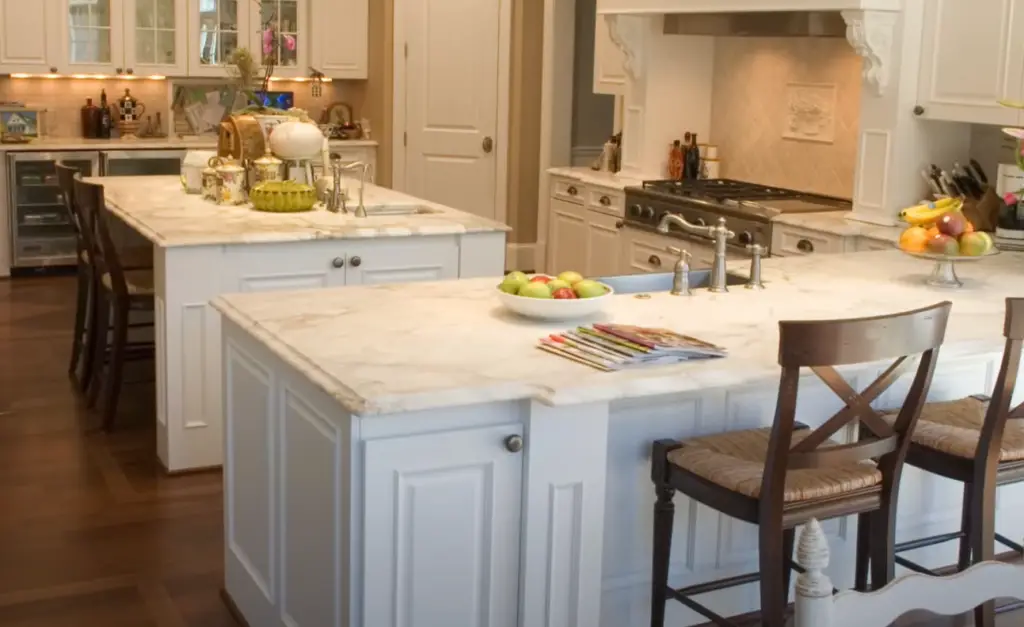
On the other hand, a single-level kitchen island is best for creating an unobstructed view of your kitchen. It also offers more flexibility in terms of design, since you can customize the shape and size to fit your space perfectly. Plus, it’s easier to clean and maintain than a two-level island.
When deciding which type of kitchen island is best for you, it’s important to consider both the look and function of the space. A two-level island might be better if you have a lot of tasks that need to take place on your countertop surface area, while a single-level one may be better if you have limited space or want an open kitchen layout.
Why have a double island kitchen?
Two-level kitchen islands can bring a major wow factor to your kitchen design. They add another dimension of luxury and convenience that one-level islands just can’t compete with. With added counter space, storage, seating, and more, two-level islands are great for entertaining large groups or providing extra room for meal prep.
Having multiple levels is also great for people who want to work in the kitchen but don’t necessarily want to be on their feet all the time. For instance, if you enjoy baking or making meals from scratch like soups and sauces, having an additional lower-level surface lets you do the prep work while seated comfortably in a chair.
If you entertain frequently or have a large family, having two levels allows you to create different interaction zones, with one level dedicated to cooking and the other to dining. This arrangement also helps keep the mess contained in one area so you don’t have to make a mad dash to clean up once everyone has left.
The main downside of double islands is that they require more floor space than one-level islands, which can be a problem if your kitchen is already cramped. Additionally, two-level islands may require two different countertop materials, an expense that some people might not be able to afford.
To summarize, double island kitchens are great for those who entertain frequently or have larger families and need extra storage and seating space. But they come with downsides of taking up more floor space and potentially needing to use multiple countertop materials. Ultimately, it’s up to you to decide what will work best in your particular kitchen!
Useful Video: Kitchen Island Size Guidelines | The Measurements You Need To Know
Conclusion
In conclusion, both the two-level kitchen island and one-level kitchen island have their advantages, so think carefully about which works best for your space. If you’re looking to maximize counter space or create a more luxurious feel in your kitchen, then go with the two-level option. On the other hand, if you’re working with a small area or need easier access to appliances and utensils, then go for the single level design. Ultimately it comes down to personal preference and lifestyle needs.
No matter which style of kitchen island you choose, keep in mind that it should be a functional addition that fits into your home’s layout. With proper planning and care, you can make sure that your new two-level or one-level kitchen island will become a beloved part of your home.
References:
- https://bellacasakitchenandbath.com/pros-and-cons-of-a-2-tier-kitchen-island
- https://www.houzz.com/discussions/378197/one-level-kitchen-island-vs-two-levels
- https://livingproofmag.com/two-level-kitchen-island-vs-one-level/
- https://francinimarble.com/blog/articleid/85/kitchen-island-one-level-or-two
- https://www.houzz.com/discussions/3419570/are-two-tiered-islands-out-of-style





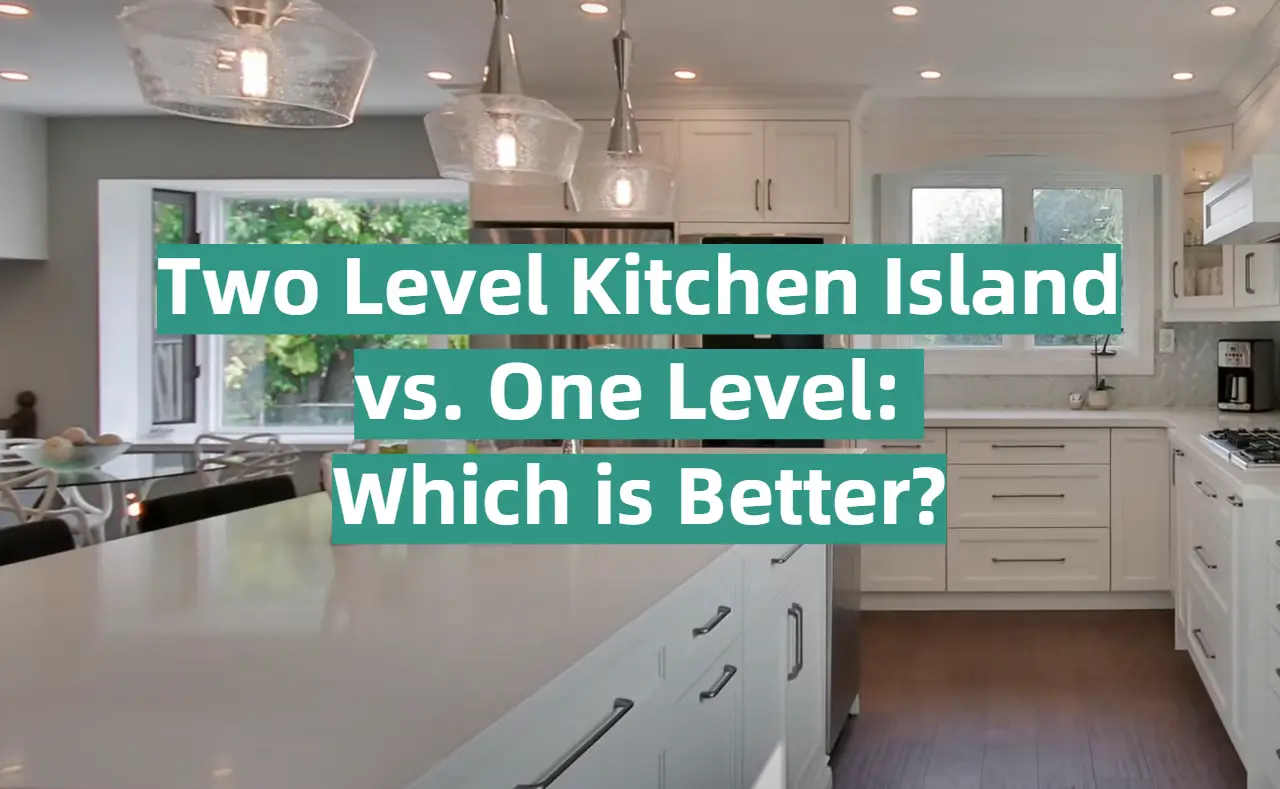







As someone who cooks often, I find the two tier kitchen island to be indispensable. The lower level provides extra counter space for food prep and staging dishes, while the higher tier creates a natural bar-height eating area. It helps delineate spaces within my open floor plan. However, the two tiers do take up more floor space.
We remodeled our kitchen last year and opted for a large single level island. While it doesn’t have the defined spaces of a two tier, the one level just provides so much open counter space. As a baker, I need a lot of area for rolling out dough and decorating cakes, so the single level works perfectly.
When we were designing our new home, I was adamant about having a two tier kitchen island. I just love the look and functionality. But now, 5 years later, I’m finding it feels a bit dated. If I remodeled, I would likely convert it to a single level island which feels more current. But that’s a big project!
As much as I love the look of a two tier kitchen island, I know it would be a hassle in my small galley kitchen. The lower tier would make moving around difficult. I think a one level island is best for small kitchens like mine where you need to maximize open floor space.
We recently renovated our dated 1990s kitchen and turned the peninsula into a two tier island. It completely opened up the space and created a beautiful focal point. The upper tier is the perfect spot for casual meals. I don’t find it trendy at all – to me it’s classic and timeless.
When house hunting, I saw some homes with two level kitchen islands and others with one level. While the two tiers look gorgeous, I worry about constantly bumping into that lower level when cooking. For functionality, I prefer a spacious single tier island like we have.
When our contractor gave an estimate for converting our two tier island to a one level, I was shocked by the cost. Because of the way the cabinets were originally built, it requires a whole rebuild. We decided it wasn’t worth the effort and will keep our island as-is. I’ve grown to appreciate the tiered look anyway.
We put a two level island in our new home build last year. I love having defined spaces – the lower for baking, the upper for eating and drinking morning coffee. I don’t find it dated at all. The varied counter heights just make sense ergonomically. No issues bumping into the tiers!
When researching kitchen islands, I looked at many photos of two tier and single level designs. While I love the look of two tiers, I worry it seems too much like a bar setup. For my family’s main kitchen, I think a spacious one level island works better for food prep and casual dining.
We cook often and entertain frequently, so when remodeling I insisted on a large two tier island. I use the lower level for baking, food prep and buffet staging when we have parties. The upper island is great for seating guests. I don’t find the tiers impede movement at all.
As professional chefs, we decided to do a double kitchen island – one large main prep island, and a smaller eat-in bar island. This gives us defined work zones and a casual dining spot. I’d only recommend two islands for large, high-traffic kitchens like ours. Not really needed in typical homes.
When our dated kitchen had an awkward peninsula, we opened up the space by converting it into a two tier island. Not only does it look fantastic, but the multi-level island works so much better. The lower tier holds small appliances that used to clutter my counters. I don’t see us ever going back to a single level island!